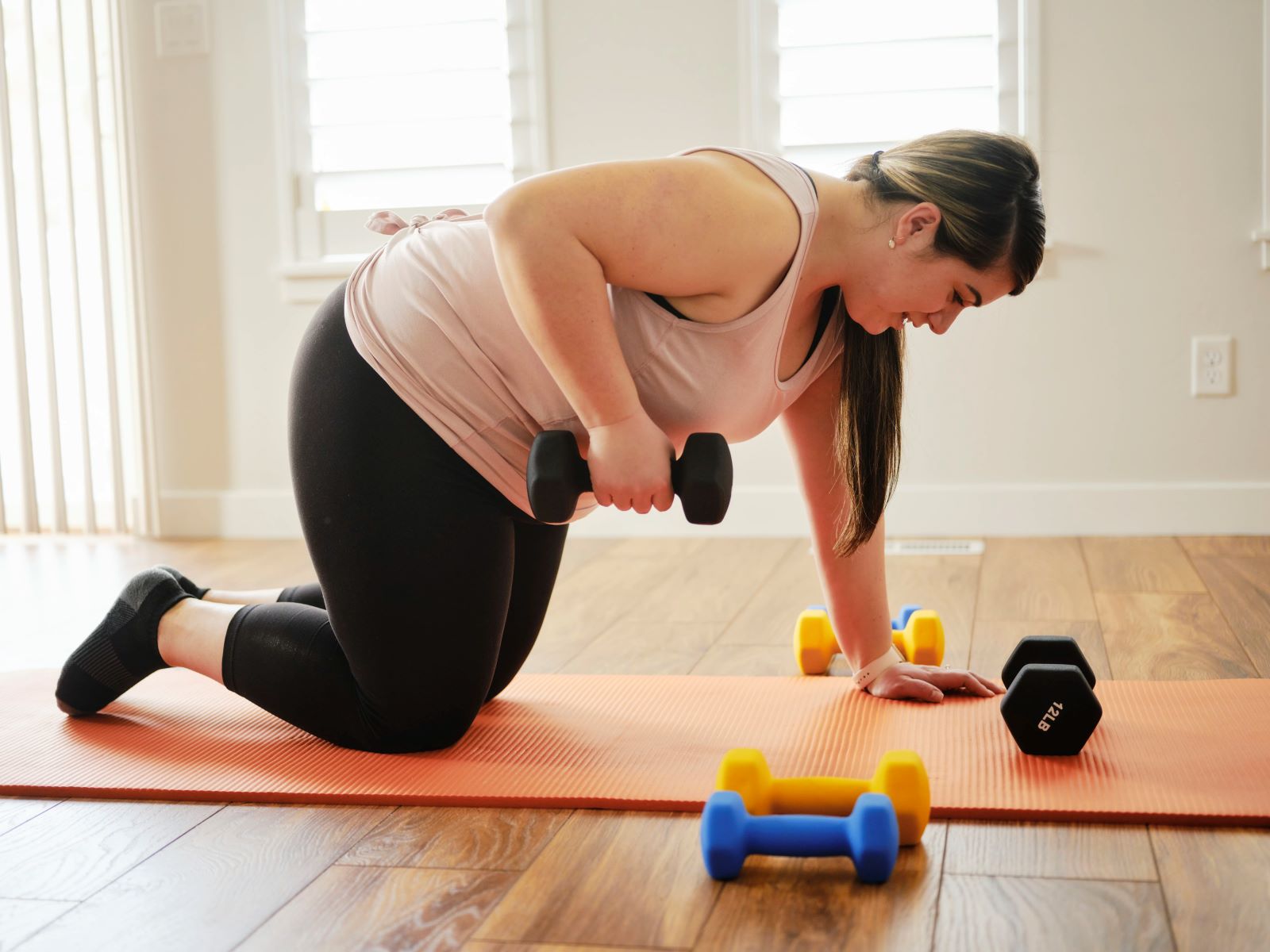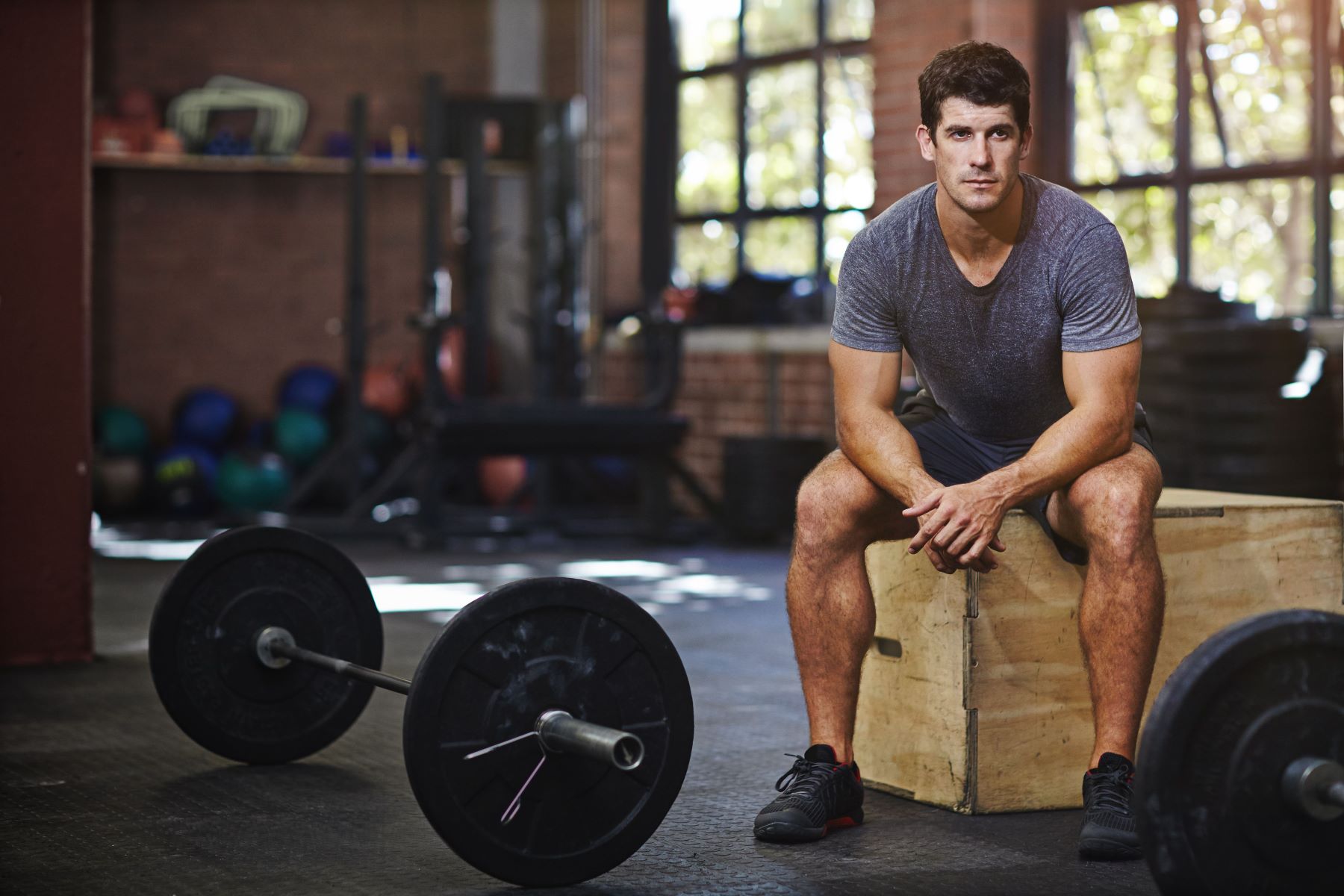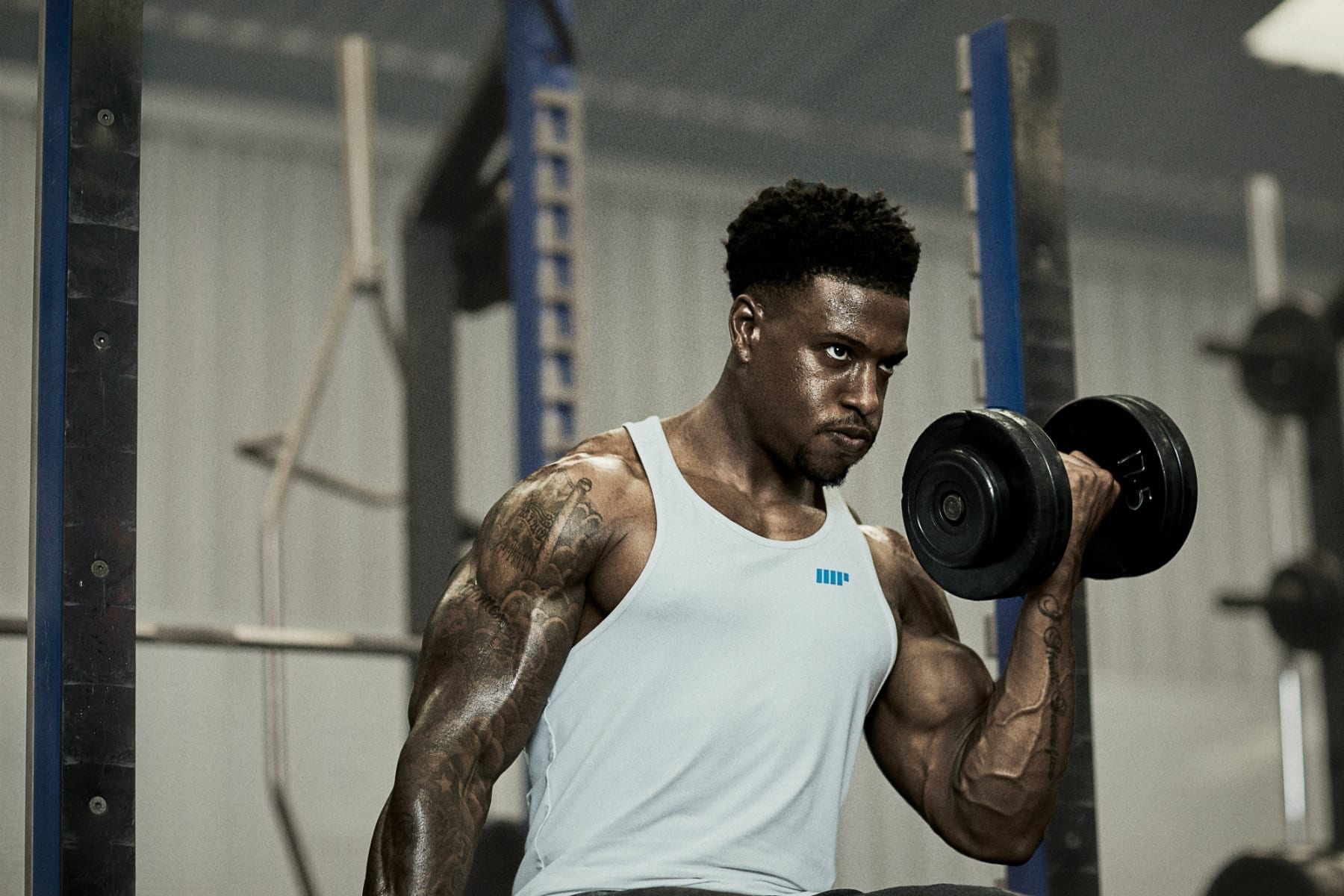

Featured
How Should A Workout Be
Modified: January 2, 2024
Discover the comprehensive guide on how a featured workout routine should be designed and implemented. Maximize your fitness results with expert tips and advice.
Introduction
A workout is a fundamental component of maintaining a healthy lifestyle. Whether you are a fitness enthusiast looking to enhance your physical performance or someone who wants to improve their overall well-being, a well-rounded workout routine is essential. Engaging in regular physical activity not only strengthens your muscles but also improves your cardiovascular health, boosts your mood, and helps manage weight.
However, it’s important to approach workouts with a clear understanding of their purpose and the principles behind them. A workout should be a carefully planned and executed activity that targets various muscle groups while incorporating elements of flexibility, cardiovascular endurance, and strength training. Moreover, proper form and technique must be prioritized to prevent injuries and maximize the benefits of each exercise.
In this article, we will explore the key components that make up an effective workout routine. From the importance of proper form to the significance of warm-up and cool-down exercises, we will delve into the various aspects of a well-structured workout program. We will also outline the different types of exercises, including resistance training, cardiovascular workouts, and flexibility exercises.
Additionally, we will discuss the importance of rest and recovery in a workout regimen, as well as the significance of tracking progress to stay motivated and achieve your fitness goals. By the end of this article, you will have a comprehensive understanding of what constitutes an effective workout and how to incorporate it into your daily routine.
Purpose of a Workout
Understanding the purpose of a workout is crucial in order to derive maximum benefits from your exercise routine. While the goals may vary from individual to individual, the overall purpose of a workout is to promote physical and mental well-being.
One of the primary purposes of a workout is to improve fitness and increase strength. Through regular exercise, you can build muscle mass, increase bone density, and enhance endurance. This not only improves your physical performance but also aids in daily activities and reduces the risk of injury.
Another purpose of a workout is to promote weight management and enhance body composition. Engaging in physical activity helps burn calories, which is essential for maintaining a healthy weight. Whether your goal is to lose weight, maintain your current weight, or achieve a more toned physique, a well-designed workout routine can be instrumental in reaching these goals.
Furthermore, a workout plays a crucial role in improving cardiovascular health. By engaging in activities that get your heart rate up, such as running, cycling, or swimming, you can strengthen your heart and lungs, improve circulation, and reduce the risk of heart disease.
In addition to physical benefits, working out also has a positive impact on mental well-being. Exercise stimulates the release of endorphins, also known as “feel-good” hormones, which can enhance mood, reduce stress, and alleviate symptoms of anxiety and depression. Regular exercise can boost self-confidence, improve cognitive function, and provide a sense of accomplishment.
Lastly, a workout can serve as a means of social interaction and personal fulfillment. Whether you prefer group classes, team sports, or solo workouts, engaging in physical activity allows you to connect with others who have similar interests or goals. It can also be a form of self-expression and a way to challenge yourself and set new personal records.
Understanding the purpose of a workout enables you to approach your exercise routine with intent and motivation. Whether your goal is to improve fitness, manage weight, boost mental well-being, or a combination of these factors, a well-structured workout program can help you achieve these objectives.
Importance of Proper Form
When it comes to any workout or exercise routine, one of the most important aspects to prioritize is maintaining proper form and technique. Proper form refers to the correct alignment and execution of movements during exercises. Whether you are lifting weights, performing bodyweight exercises, or engaging in cardio activities, proper form plays a critical role in optimizing results and preventing injuries.
One of the key reasons why proper form is important is that it ensures the right muscles are being targeted. Each exercise is designed to target specific muscle groups, and executing the movements with proper form ensures that these muscles are being activated effectively. Improper form can lead to other muscles compensating for the intended targets, resulting in imbalances and potentially limiting the effectiveness of the exercise.
Additionally, using correct form helps to reduce the risk of injuries. When exercises are performed with improper technique, the body is at an increased risk of strains, sprains, and other injuries. For example, lifting weights with improper form can put excessive strain on joints, leading to joint pain or even long-term damage. By maintaining proper form, you can protect your body and reduce the likelihood of injury.
Another benefit of proper form is that it maximizes the efficiency of your workouts. When you execute exercises with proper form, you can engage the targeted muscles more effectively, ensuring that they are working efficiently and effectively. This can lead to better results, as the muscles are being subjected to the appropriate level of stress and stimulation.
Proper form is also essential in achieving long-term progress and avoiding plateaus. When you perform exercises with improper form, you may initially see progress, but it won’t be sustainable in the long run. By using proper form, you establish a solid foundation for continuous progress and allow your body to adapt and improve over time.
Lastly, maintaining proper form helps to improve body awareness and mind-muscle connection. By focusing on the alignment and execution of each movement, you become more aware of your body and how it responds to different exercises. This increased body awareness can help you make adjustments and modifications to optimize your workouts and target specific areas more effectively.
Overall, the importance of proper form cannot be overstated when it comes to workouts and exercise routines. It allows for targeting the right muscles, reduces the risk of injuries, maximizes the effectiveness of your workouts, promotes long-term progress, and enhances body awareness. So the next time you hit the gym or engage in any physical activity, remember to prioritize proper form for optimal results and long-term well-being.
Warm-up and Cool-down
The warm-up and cool-down are two critical components of a well-rounded workout routine that are often overlooked. While the main part of your workout may be focused on intense exercises, it is essential to dedicate time to properly prepare your body before and after the workout. Let’s explore why warm-up and cool-down exercises are so important.
The warm-up is a crucial part of any workout as it helps prepare your body for the upcoming physical activity. Its primary purpose is to gradually increase your heart rate, circulation, and body temperature. A good warm-up routine typically involves low-intensity exercises that target the major muscle groups you will be using during your workout. These exercises can include light jogging, dynamic stretches, or mobility exercises.
There are several benefits to incorporating a proper warm-up into your workout routine. First, it prepares your cardiovascular system for the increased demand of a workout. The gradual increase in heart rate and blood flow helps deliver oxygen and nutrients to your muscles, making them more efficient during exercise.
Additionally, a warm-up helps loosen up your muscles and joints, enhancing flexibility and range of motion. This reduces the risk of strains, pulls, and other injuries that can occur when muscles and joints are tight or stiff. The increased blood flow to your joints also helps to lubricate them, further promoting joint health and reducing the risk of injury.
Mentally, a warm-up helps to shift your focus from everyday activities to the impending workout. It allows you to mentally prepare yourself, increase concentration, and set the right mindset for the exercises ahead.
After you complete your workout, it’s equally important to cool down properly. The cool-down phase involves gradually decreasing the intensity of your workout and performing exercises that promote recovery. This can include exercises such as walking or light stretching.
There are several benefits to including a cool-down in your workout routine. First, it helps to gradually lower your heart rate and bring it back to its resting state. This gradual reduction in heart rate helps prevent dizziness or fainting that can occur if you suddenly stop exercising.
A cool-down also aids in preventing muscle soreness and stiffness that can occur post-workout. By gradually slowing down and performing gentle stretches, you allow your body to transition from the high-intensity workout to a state of relaxation. This promotes blood circulation, assists in removing waste products, and aids in muscle recovery.
Lastly, the cool-down phase allows you to mentally unwind and transition back to your daily activities. It provides a period of relaxation and reflection, giving you the opportunity to acknowledge and appreciate the effort you put into your workout.
Incorporating a proper warm-up and cool-down into your workout routine is essential for optimizing performance, preventing injuries, and promoting overall well-being. So, take the time to prepare your body and mind before each workout and ensure that you allow for a proper recovery afterward. Your body will thank you for it.
Types of Exercises
When it comes to designing a well-rounded workout routine, it’s important to incorporate a variety of exercises that target different muscle groups and fitness components. Let’s explore some of the key types of exercises you can include in your workout regimen.
1. Resistance Training: Resistance training involves the use of external resistance, such as free weights, resistance bands, or weight machines, to strengthen and tone your muscles. It helps improve muscle strength, endurance, and overall body composition. Common resistance training exercises include squats, deadlifts, bench presses, and bicep curls.
2. Cardiovascular Exercise: Cardiovascular exercises, also known as cardio or aerobic exercises, elevate your heart rate and increase your breathing rate. This type of exercise is crucial for improving cardiovascular health, increasing endurance, and burning calories. Examples of cardiovascular exercises include running, swimming, cycling, and jumping rope.
3. Flexibility and Stretching: Flexibility exercises focus on improving your range of motion and joint flexibility. These exercises involve stretching the muscles and can help prevent injuries, enhance athletic performance, and improve posture. Stretching exercises can be static (holding a stretch) or dynamic (moving through a range of motion), and can include exercises such as hamstring stretches, shoulder stretches, and yoga poses.
4. Functional Training: Functional training exercises mimic movements you use in everyday life or in sports-specific activities. They focus on improving your body’s ability to perform these movements efficiently and effectively. Functional training exercises often involve compound movements that engage multiple muscle groups at the same time. Examples include squats, lunges, kettlebell swings, and medicine ball throws.
5. Balance and Stability Exercises: Balance and stability exercises help improve your proprioception and coordination. These exercises focus on strengthening the muscles that help you maintain balance and stabilize your body. They can include exercises such as standing on one leg, Bosu ball exercises, and yoga balancing poses.
6. HIIT (High-Intensity Interval Training): HIIT workouts involve short bursts of intense exercise followed by periods of rest or lower-intensity exercise. This type of training is highly effective for cardiovascular fitness, calorie burning, and increasing metabolism. HIIT workouts can be done with various exercises such as sprints, burpees, mountain climbers, or cycling.
By including a combination of these exercise types in your workout routine, you can target different muscle groups, improve various fitness components, and prevent boredom or plateau. Remember to consult with a fitness professional or personal trainer to ensure that your exercise selection aligns with your goals and abilities.
Resistance Training
Resistance training, also known as strength training or weightlifting, is a crucial component of a well-rounded workout routine. It involves using external resistance, such as free weights, weight machines, or resistance bands, to challenge and strengthen your muscles. Resistance training offers numerous benefits for individuals of all fitness levels, from beginners to advanced athletes. Let’s explore why resistance training is important and how it can improve your overall fitness.
Building Muscle Strength and Endurance: One of the primary goals of resistance training is to increase muscle strength and endurance. By engaging in regular strength training workouts, you can stimulate muscle growth and development. As you progressively increase the resistance, your muscles adapt and become stronger, allowing you to lift heavier weights over time. This increase in muscle strength not only improves your physical performance but also enhances your overall functional ability in daily activities.
Improving Body Composition: Resistance training is also effective in improving body composition. As you build muscle mass through strength training, your overall body fat percentage tends to decrease. This is because muscle tissue has a higher metabolic rate compared to fat tissue, meaning that having more muscle can help increase your resting metabolic rate and burn more calories at rest. Additionally, a toned and sculpted physique can be achieved through resistance training, leading to a more aesthetically pleasing appearance.
Bone Health and Injury Prevention: Resistance training plays a crucial role in maintaining and improving bone health. Weight-bearing exercises, such as squats and deadlifts, help stimulate bone growth and increase bone density. This is especially important for preventing osteoporosis and reducing the risk of fractures, particularly in older individuals. Resistance training also strengthens the muscles surrounding the joints, providing stability and protection against injuries.
Enhancing Sports Performance: Resistance training is a valuable tool for athletes looking to enhance their performance in specific sports. It can improve power, speed, agility, and overall athletic performance. By targeting specific muscle groups and movement patterns used in sports activities, strength training can help athletes generate more force, improve coordination, and reduce the risk of sports-related injuries.
Boosting Metabolism: Resistance training can increase your metabolism, both during and after the workout. This is due to the additional energy required to repair and build muscle tissue. As a result, incorporating resistance training into your workout routine can help support weight management goals and improve overall body composition.
When engaging in resistance training, it is important to prioritize proper form and technique to reduce the risk of injuries. If you are new to strength training, consider seeking guidance from a fitness professional who can teach you the proper techniques and help you design a safe and effective program tailored to your goals.
Overall, resistance training is a vital component of a comprehensive workout routine. From building strength and endurance to improving body composition and enhancing sports performance, the benefits of resistance training are vast. So, don’t shy away from picking up those weights and challenging yourself to reap the rewards of resistance training.
Cardiovascular Exercise
Cardiovascular exercise, also known as cardio or aerobic exercise, is a key component of any well-rounded workout routine. It involves activities that elevate your heart rate and increase your breathing rate, providing numerous benefits for your cardiovascular system and overall health. Let’s explore why cardiovascular exercise is important and how it can improve your fitness.
Improved Heart Health: Engaging in regular cardiovascular exercise is one of the best ways to improve your heart health. It strengthens your heart muscle, making it more efficient at pumping blood throughout your body. This improves circulation and can lower your blood pressure, reducing the risk of heart disease and stroke.
Increased Endurance: Cardiovascular exercise improves your endurance and stamina by increasing your cardiovascular fitness. Regularly participating in activities such as running, cycling, swimming, or dancing improves your ability to perform such activities for extended periods without feeling fatigued. This increased endurance translates into improved performance in daily activities and sports.
Calorie Burning and Weight Management: Cardiovascular exercise is an effective way to burn calories and support weight management goals. When you engage in cardio activities, your body burns calories to fuel the activity. This helps create a calorie deficit, which can aid in weight loss. Additionally, cardio exercise can help maintain a healthy weight by burning excess calories and promoting fat loss.
Increased Lung Capacity: Regular cardiovascular exercise can increase your lung capacity, allowing your lungs to take in and utilize oxygen more efficiently. This can lead to improved respiratory function and better overall oxygenation of your body’s tissues and organs.
Mood Enhancement: Cardiovascular exercise has a positive impact on mental health and well-being. It stimulates the release of endorphins, chemicals in the brain that promote feelings of happiness and reduce stress. Engaging in cardio activities can boost your mood, reduce symptoms of anxiety and depression, and improve overall mental well-being.
Reduced Risk of Chronic Diseases: Regular cardiovascular exercise has been shown to reduce the risk of many chronic diseases, including obesity, type 2 diabetes, and certain types of cancer. It can also improve insulin sensitivity and regulate blood sugar levels, lowering the risk of developing diabetes. Furthermore, cardiovascular exercise can help manage cholesterol levels, reducing the risk of heart disease.
It is important to choose cardiovascular activities that you enjoy and that suit your fitness level and preferences. This helps ensure consistency and enjoyment while reaping the benefits of cardio exercise. Aim for at least 150 minutes of moderate-intensity cardio exercise or 75 minutes of vigorous-intensity cardio exercise per week to maintain optimal cardiovascular fitness.
Incorporating cardiovascular exercise into your workout routine is a valuable investment in your overall health and well-being. So, whether you prefer jogging, cycling, swimming, or dancing, get your heart pumping and reap the benefits of cardio exercise.
Flexibility and Stretching
Flexibility and stretching exercises are often overlooked but are essential components of a well-rounded workout routine. They focus on improving your range of motion, muscle flexibility, and joint mobility. Incorporating flexibility exercises into your routine offers numerous benefits for both your physical and overall well-being. Let’s explore why flexibility and stretching are important and how they can improve your fitness.
Improved Range of Motion: Flexibility exercises target your muscles and joints, improving their ability to move freely. By regularly performing stretching exercises, you can increase your range of motion, allowing you to perform daily activities more efficiently and with greater ease. Whether it’s bending, reaching, or twisting, improved flexibility enhances your overall functional ability.
Reduced Risk of Injuries: One of the primary benefits of flexibility and stretching exercises is the reduced risk of injuries. When your muscles are flexible, they are less prone to strains, sprains, and other muscular injuries. Stretching helps to improve the elasticity of your muscles, making them more resistant to sudden or excessive force. Additionally, flexibility exercises can help alleviate tightness and imbalances in the muscles, reducing the risk of overuse injuries.
Better Posture and Body Alignment: Regular flexibility training can improve your posture and body alignment. Tight muscles can pull your body out of alignment, leading to poor posture and even chronic pain. By stretching regularly, you can lengthen and relax tight muscles, promoting proper alignment and posture. This can alleviate discomfort, improve balance, and help you move with greater efficiency and grace.
Relief from Muscle Tension and Stress: Flexibility exercises provide an opportunity for relaxation and stress relief. When you stretch, your body releases tension from the muscles, allowing you to experience a sense of relaxation and relief. Stretching can also help calm your mind, reduce stress levels, and promote a sense of well-being.
Enhanced Athletic Performance: Flexibility plays a significant role in athletic performance. Having good flexibility allows you to move more freely and with greater agility, improving your overall athletic ability. It can also contribute to improved technique and form, leading to better performance in activities such as running, weightlifting, or sports-specific movements.
Increased Mind-Body Connection: Flexibility exercises require you to focus on your body and the sensations you experience during each stretch. This promotes a stronger mind-body connection, enhancing body awareness and mindfulness. Being in tune with your body not only improves your performance during exercise but also contributes to better self-awareness and overall well-being.
When incorporating flexibility exercises into your routine, it’s important to warm up your muscles beforehand with some gentle movements. Static stretches, where you hold a stretch for a certain period, and dynamic stretches, where you move through a range of motion, are both beneficial. Aim to stretch all major muscle groups, focusing on areas that feel tight or restricted, and hold each stretch for at least 15-30 seconds.
Remember to listen to your body and avoid pushing beyond your comfort zone or causing pain. Flexibility takes time to improve, so be patient and consistent with your stretching routine. By prioritizing flexibility and stretching exercises, you can enhance your overall fitness, reduce the risk of injuries, and experience greater freedom of movement.
Rest and Recovery
Rest and recovery are vital components of any workout routine, yet they are often overlooked. Many people mistakenly believe that the more they exercise, the better the results. However, rest and recovery are just as important as the exercise itself. Giving your body time to rest and recover is crucial for optimizing performance, preventing injuries, and achieving long-term fitness goals. Let’s delve into why rest and recovery are essential and how they contribute to your overall well-being.
Repair and Rebuild: When you exercise, you place stress on your muscles and tissues. Rest and recovery periods allow your body to repair and rebuild these structures. During rest, your body synthesizes protein and restores glycogen stores, which are essential for muscle repair and growth. Without sufficient rest, your muscles may experience a breakdown in the delicate balance between breakdown and repair, leading to decreased performance and increased risk of injury.
Preventing Overtraining: Overtraining occurs when you push your body beyond its limits without allowing adequate time for rest and recovery. Overtraining can lead to decreased performance, fatigue, mood disturbances, and an increased risk of injuries. By incorporating rest and recovery periods into your routine, you help prevent overtraining and allow your body to adapt and improve from your workouts.
Reduced Risk of Injuries: Rest and recovery are essential for injury prevention. Taking regular rest days and ensuring proper sleep allows your muscles, tendons, and ligaments to recover and strengthen. It helps prevent overuse injuries and gives your body the time needed to repair any microtears that may have occurred during exercise. Adequate rest also helps rebalance your body’s stress hormones, reducing the risk of chronic inflammation and other conditions related to overtraining.
Improved Performance: Rest and recovery play a significant role in enhancing performance. Giving yourself sufficient downtime allows your body to recharge and rejuvenate, leading to improved strength, power, and endurance. Rested muscles and a fresh mind enable you to perform at your best and achieve optimal results during your workouts.
Mental Well-being: Rest and recovery are not only important for your physical health but also for your mental well-being. Regularly engaging in relaxation activities, getting enough sleep, and taking time for yourself can help reduce stress, improve mood, and enhance overall mental health. It allows you to recharge mentally and emotionally, improving motivation and focus for future workouts.
Listening to Your Body: Rest and recovery provide you with an opportunity to listen to your body’s needs. Paying attention to signs of fatigue, muscle soreness, or decreased performance can help you adjust your workout routine and prevent burnout. Remember that everyone’s recovery needs may differ, so it’s important to find a balance that works for you.
Remember to incorporate rest days into your workout schedule, allowing at least one or two days of complete rest each week. Additionally, prioritize quality sleep, aim for seven to nine hours per night, and consider incorporating active recovery activities such as gentle stretching or yoga on rest days.
Overall, rest and recovery are essential aspects of a well-rounded fitness routine. By giving your body time to repair, rebuild, and recharge, you not only optimize your performance but also reduce the risk of injuries and promote your overall well-being.
Tracking Progress
Tracking your progress is a crucial aspect of any fitness journey. It allows you to monitor your advancements, stay motivated, and make informed adjustments to your workout routine. Whether your goal is to lose weight, build muscle, improve endurance, or enhance overall fitness, tracking your progress is essential for effectively reaching your goals. Let’s explore why tracking progress is important and how it can benefit your fitness journey.
Accountability and Motivation: Tracking your progress holds you accountable to your goals. It provides a sense of achievement and motivation as you see the improvements you’ve made over time. By monitoring your progress, whether through measurements, photos, or fitness assessments, you can visibly see the positive changes your hard work and dedication have brought about.
Identifying Patterns and Adjustments: Monitoring your progress allows you to identify patterns and make necessary adjustments to your workout routine. By tracking factors such as weight, body measurements, or workout performance, you can pinpoint areas of improvement or stagnation. This valuable information helps you modify your workouts, nutrition, or other lifestyle factors to ensure continued progress and overcome plateaus.
Setting Realistic Goals: Tracking progress helps you set realistic and achievable goals. By recognizing your starting point and reviewing your progress, you can establish realistic expectations for your fitness journey. This prevents setting overly ambitious or unattainable goals and allows for personal growth and success at a pace that suits you.
Enhancing Performance: Monitoring progress can help you gauge improvements in strength, endurance, or speed. Tracking your workout performances, such as the weight lifted, running times, or the number of repetitions, allows you to see tangible evidence of your progress. This not only boosts confidence but also provides a benchmark for further improvement and goal setting.
Celebrating Milestones: Tracking progress provides opportunities to celebrate milestones along your fitness journey. Whether it’s reaching a certain weight, achieving a personal record in a specific exercise, or fitting into a smaller clothing size, acknowledging these milestones boosts morale and reinforces your commitment to your goals.
Providing Insights and Data: Tracking progress generates valuable data about your fitness journey. Over time, the data can reveal trends, patterns, and correlations between your workouts, diet, and overall progress. This information helps you make informed decisions, refine your training program, and maintain long-term progress and success.
There are various ways to track your progress, including keeping a workout journal, using mobile apps, utilizing wearable fitness trackers, or seeking guidance from fitness professionals who can perform assessments and measurements. Choose a tracking method that aligns with your preferences and provides you with the most valuable insights.
Remember that progress is not always linear, and there may be ups and downs along the way. Be patient and stay focused on your long-term goals. Regularly assess and adjust your tracking methods to ensure they remain effective and continue to support your fitness journey.
By tracking your progress, you gain the ability to celebrate your achievements, stay motivated, and make informed decisions to continually improve. So, embrace the power of tracking and watch as it propels you towards reaching your fitness goals.
Conclusion
A well-rounded workout routine encompasses various components that work together to enhance your overall fitness and well-being. From understanding the purpose of a workout to incorporating different types of exercises, each aspect plays a crucial role in achieving your fitness goals.
Proper form ensures that you target the right muscles and reduces the risk of injuries. Warm-up and cool-down exercises prepare your body for the workout and aid in recovery. Resistance training builds muscle strength and improves body composition, while cardiovascular exercise strengthens your heart and lungs, burns calories, and boosts endurance. Flexibility and stretching exercises improve range of motion, prevent injuries, and promote relaxation. Rest and recovery provide essential time for your body to repair, regenerate, and prevent overtraining.
Tracking progress can greatly enhance your fitness journey by providing accountability, motivation, and insights into your progress. It helps you set realistic goals, make adjustments, and celebrate milestones.
Remember, fitness is a personal journey, and it’s important to listen to your body, set realistic goals, and find joy in the process. Consult with fitness professionals or personal trainers to ensure that your workout routine aligns with your goals and abilities. Stay consistent, be patient, and enjoy the numerous benefits that a well-rounded workout routine can offer.









